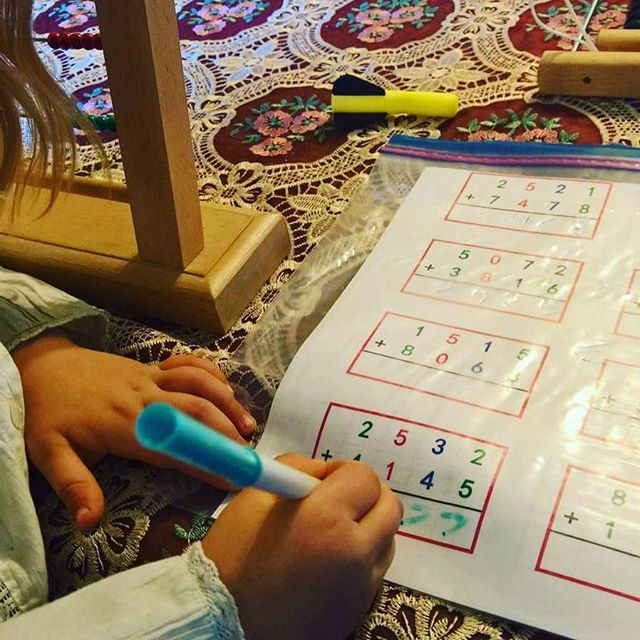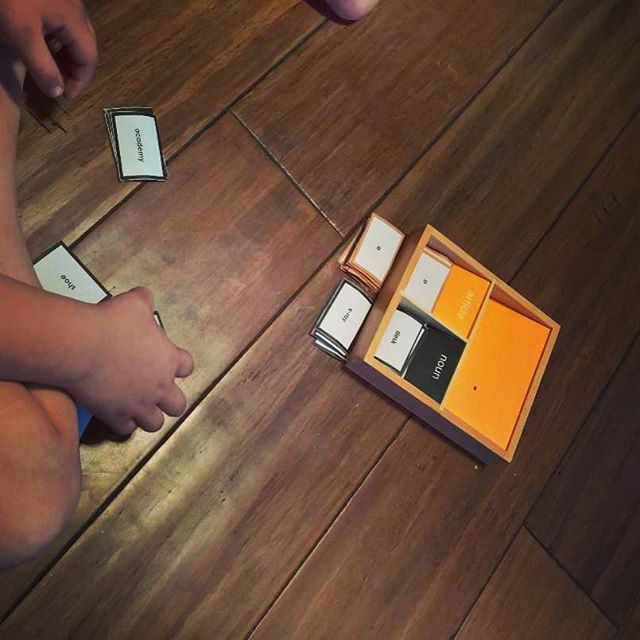You may be debating the necessity of having a dedicated space for a classroom, and rightly so, with so many learning opportunities available either online, or through alternate locations such as museums, libraries, and COOPs. I see a classroom-less homeschool as a real possibility for us at some point in the future. But as my students are still quite young, learning through doing requires supplies, and supplies need a space. The manipulatives required for concrete learning of abstract concepts have to be available, and easily accessible for the kids, as well as simple for them to put back. We have made one of our bedrooms useful as such a place, with workspaces for the kids as well. And though they do enjoy curling up in the window seat when they read, they usually end up bringing their activities out to the living room floor or the dining room table. Here is how we have the classroom organized:

On the left, unpictured, is our Library shelving, then you can see one of the desks designated for art or writing activities. Behind that are the Montessori manipulatives, each shelf a different category; one for Sensorial learning, one for Mathematics, and several of the shorter ones at the top house the large map puzzles for Geography. The very top shelf holds media based learning, DVD courses and the like. Beneath the window seat reading nook, the lacing, snapping, zipping, and tying frames hang. In the closet on the right, there is a shelf for wooden puzzles (an extension of Math and logic), The large science manipulatives, natural world math manipulatives, puzzles, and the imagination station. There is another desk situated on the left wall, and between it and the closet is the writing shelf, with different types of paper, activity books, writing utensils, and grammar activities, including the grammar boxes, and metal insets. Here’s a better look at that desk

which is predominantly used for their art projects. Their art supplies are organized (well, as much as art supplies CAN be organized) in the green corner cabinet, pictured here. Because of it’s proximity, the desk is quite frequently covered in clay and paint. Next, these are what I used to deem circle time activities.

Calendar building, Pouring and tweezing activities, Nomenclature and three part card activities, and some construction activities. On the other side of the doorway is our Library section.

The kids are welcome to read any day for school, but on science days, they have to read science books, on history days, history books, and so on. So our books are organized by subject. Literature, Languages, Math, Art, Sciences, History, Theology, Easy Reading, and Magazines. On their reading days, they have the freedom to select any subject they choose.
Even as the kids outgrow their need for manipulative based learning, we will always have a library. This room will more than likely one day become a bedroom, but for now, it is a place for them to learn and read, build and explore, and grow.











